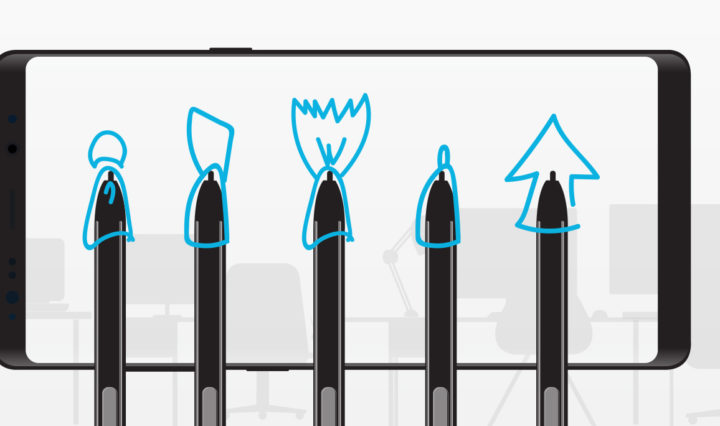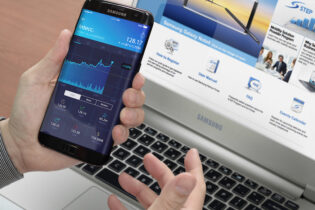Despite 40 years of continuous IT advances, the number of paper-based processes still being employed today would suggest not as much progress has been made in terms of increasing productivity at work as everyone who works in IT might have hoped or expected. Whether it’s a traffic ticket or a visit to a local physician, far too many trees are still being sacrificed to produce paper.
The issue, of course, is not that people have some great attachment to paper. For hundreds of years people have been using pens to share their thoughts and sign binding agreements. Mobile applications and electronic signatures have come a long way in terms improving productivity at work by eliminating the need for paper forms. But in a lot of use cases, pecking on tiny keyboards on your mobile phone is still not as intuitive as writing with a pen.
To allow an end user to replicate that experience in a digital format, Samsung developed the Galaxy Note line of large-format smartphones featuring its S Pen technology. The latest edition, the Galaxy Note8, advances that capability with new features, including the ability to take up to 100 pages of notes without even having to unlock the phone, annotate documents, select and crop part of an image, or even create an animate GIF. But more important from a solution providers’ perspective is arguably the application programming interface (API) for the S Pen. Via that API, a solution provider can develop a wide range of innovative new digital business applications that are all aimed at increasing productivity at work.
An Increasing Number of Applications
Eric McCarty, vice president of mobile product marketing for Samsung Mobile B2B, says those applications can span everything from legal documents that would include the actual signature of the person signing them (versus a digital facsimile of a generic signature) to applications for the travel industry that would enable customers to sign up for a cruise after viewing photos and videos before they change their minds.
Law enforcement agencies, adds McCarty, also represent a significant opportunity. Police officers typically type up their notes hours after their initial investigation. A Galaxy Note8 and S Pen enable officers to digitally capture those notes in real time. Other use cases include viewing and editing engineering documents as well as photo editing.
Discover the Most Intelligent S Pen Yet
Learn five smart tricks you can do with the S Pen in this infographic. Download Now
In general, McCarty says any application involving the management of workflow can be improved using an S Pen. Furthermore, McCarty says the fact that both Microsoft and Google have built support for pens into their productivity applications is another sign the technology has become more mainstream.
Improving User Experience
Taking notes is a lot more of a personal experience. The more personalized the customer experience is, the more engaged the user becomes. Being able to annotate content on a mobile application helps make any digital business application stickier in terms of wanting to employ those applications multiple times over.
There’s no substitute for doing when it comes to learning. Most solution providers could easily discover a paper-based process within their own organization that could benefit from a digital pen-enabled application.
Armed with that experience, it’s only a small jump to build a practice around helping other organizations become more efficient. They say the pen is mightier than the sword. Before too long, those end users will not only have a lot more confidence in their own ability to digitally transform their business, but the level of trust they have in solution providers’ skills to take on more ambitious projects will exponentially increase.
Shape your marketing messaging with Samsung’s channel content resources.








